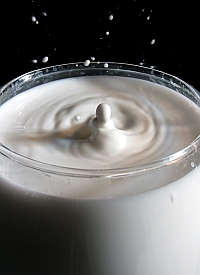 A study drawing on a database of reports on fraud and economically motivated adulteration in food shows that olive oil, milk, honey, and saffron are among the foods found most often with adulterated ingredients. The research appears online in the April Journal of Food Science (paid subscription required) that draws on a database offered by the U.S. Pharmacopeial Convention (USP) in Rockville, Maryland.
A study drawing on a database of reports on fraud and economically motivated adulteration in food shows that olive oil, milk, honey, and saffron are among the foods found most often with adulterated ingredients. The research appears online in the April Journal of Food Science (paid subscription required) that draws on a database offered by the U.S. Pharmacopeial Convention (USP) in Rockville, Maryland.
The researchers — Jeffrey Moore and Markus Lipp of USP, and John Spink of Michigan State University in East Lansing — compiled the data from scholarly journals and general media, organized the entries into a database, then reviewed and analyzed the data to identify trends. The resulting database has become part of USP’s food ingredient standards.
The data represent 1,305 records of food fraud based on a total of 660 scholarly, media, and other publicly available reports. The data come from mainly scholarly research with 1,054 records, plus 251 media reports. High-performance liquid chromatography and infrared spectroscopy were the most common analytical detection procedures, and chemometrics data analysis — extracting data from chemical analysis — was also used in a large number of reports.
The researchers call food fraud, quoting definitions from the U.S. Department of Homeland Security, the deliberate substitution, addition, tampering or misrepresentation of food, food ingredients or food packaging, or false or misleading statements made about a product for economic gain. A USP expert panel adds a more specific type of fraud — the intentional or economically motivated adulteration of food ingredients — as the fraudulent addition of nonauthentic substances or removal or replacement of authentic substances without the purchaser’s knowledge for economic gain of the seller.
Using these definitions, The authors found 95 percent of records involved replacement of authentic materials, either partially or completely by other, less expensive substitutes. An example is the partial substitution of olive oil with hazelnut oil. Other problems emerging from the data include spices diluted with lead chromate and lead tetraoxide, substitution of Chinese star anise with toxic Japanese star anise, and melamine adulteration of high protein content foods. In addition to olive oil, the authors cited milk, honey, and saffron as products most affected by ingredients fraud.
Read more:
- Standards Proposed for Pharmaceutical Supply Chain Integrity
- Database to Track Substandard, Counterfeit Medicines
Photo: Guiri Reyes/Flickr
* * *

 RSS - Posts
RSS - Posts
I just read that Pizza Hut is coming outr with a Pizza that has a crust made out of…wait for it…made out of cheeseburgers and chicken strips.
I swear I am not making this up! There was a picture of it on line. Just bizarre looking!
Pizza was one of the few fast food meals that cwas even close to being healthy. But a crust made out of cheeseburgers and chicken strips???
I am not making this up. they call the thing a Crown Crust Carnival pizza!
And America gets fatter…
Mark